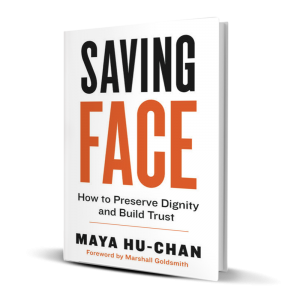1. Create psychological safety. Harvard Business School professor Amy Edmondson defines psychological safety as a group culture in which everyone in the group feels that they are safe to take interpersonal risks. So, what does that culture look like? When Google set out to study its most high-performing teams, they discovered that in those teams everyone took equal turns speaking. They had high social sensitivity, which means that they were sensitive to the tone of the voice, facial expressions, and body language of their colleagues, and used this nonverbal information to really understand how their team members feel. It’s in this kind of culture that people feel safest to express themselves, flex their creativity, and take the risks that lead to innovation. It takes an inclusive leader to be aware of and create a condition that leads to psychological safety.
2. Employ a cultural broker. By now, most companies are aware that diverse teams deliver better business results. But what many companies don’t know is how to facilitate and manage the conflicting norms, miscommunications, and misguided assumptions that can arise in diverse teams. This is where cultural brokerage comes in.
Professor Sujin Jang defines cultural brokerage as the act of facilitating interactions across parties from different cultural backgrounds. Someone who acts as a cultural broker acts as a bridge between teammates of different cultures. And there are two types of cultural brokers. The first is cultural insiders. Now they have multicultural experiences that align directly with the culture represented in their team. For example, in a team with mostly Chinese and American workers, a cultural insider is someone who has firsthand knowledge of both cultures. This cultural brokerage can integrate information and ideas from both cultures proposing ideas and solutions that combine elements of each.
The second type of cultural broker is the cultural outsider. This is someone with experience in two or more cultures not represented in their team. In this American and Chinese team example, a cultural outsider could have experience with, say, French and Malaysian cultures. Even though they don’t directly have knowledge of Chinese American culture, their cultural antenna is sharper than their monocultural counterparts. Because of this, they can act as a neutral third party and facilitate the differences in backgrounds. An inclusive leader is aware of the needs of a diverse team. If someone doesn’t emerge as a natural cultural broker, an inclusive leader recognizes the need for this role and enlists the help of an external intercultural consultant. When teams can work through cultural differences, they work more effectively and harmoniously. Innovation thrives in those conditions.

To be an inclusive leader and build an innovative team culture, you can follow these three steps:
1. Create psychological safety
2. Employ a cultural broker
3. And embrace work-life integration.
 My book, Saving Face: How to Preserve Dignity and Build Trust, illustrates how we can honor face to create positive first impressions, avoid causing others to lose face, and, most importantly, help others save face to build trust and lasting relationships inside and outside the workplace.
My book, Saving Face: How to Preserve Dignity and Build Trust, illustrates how we can honor face to create positive first impressions, avoid causing others to lose face, and, most importantly, help others save face to build trust and lasting relationships inside and outside the workplace.
Click here to watch the video.
This video was originally posted on AthenaOnline.com

